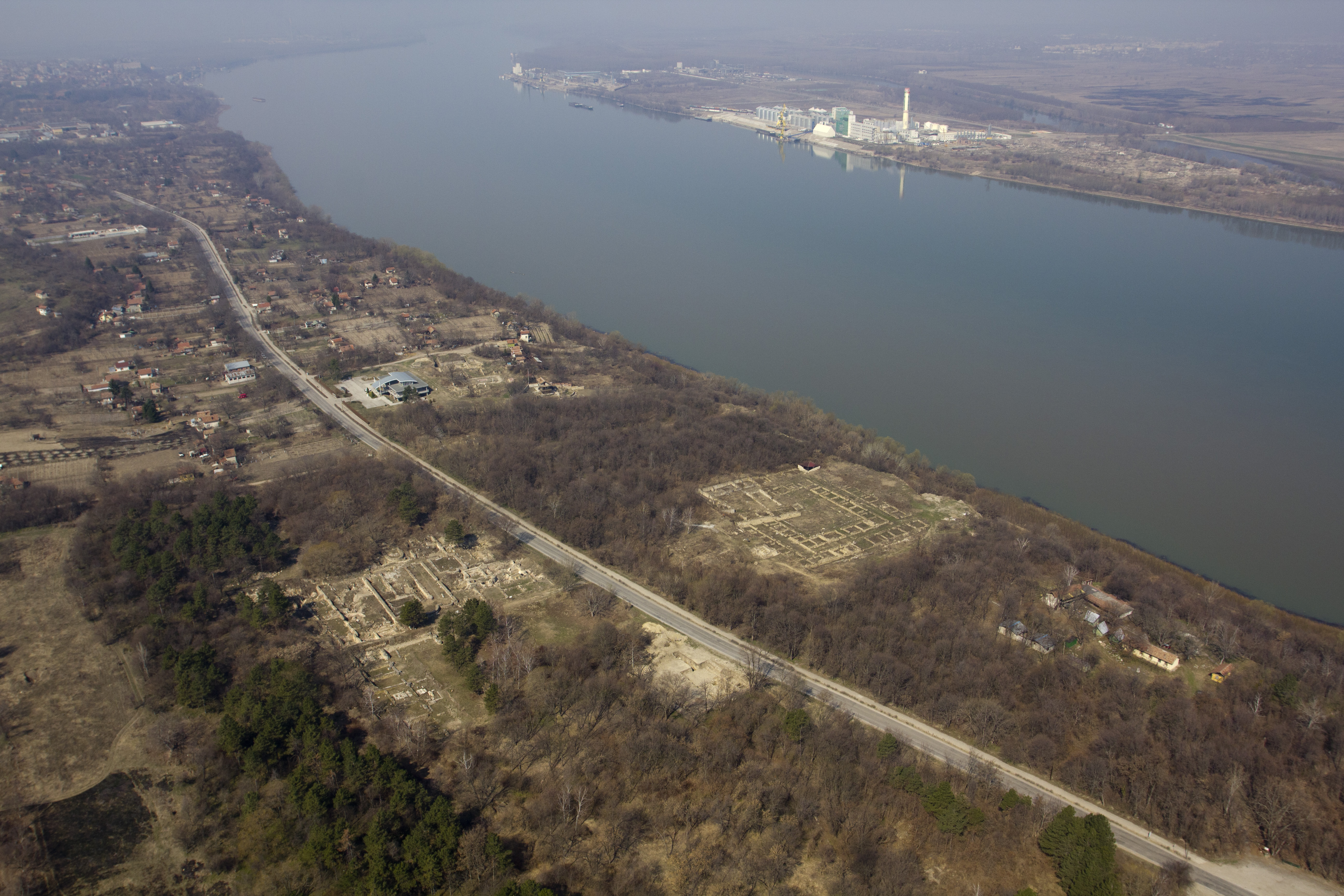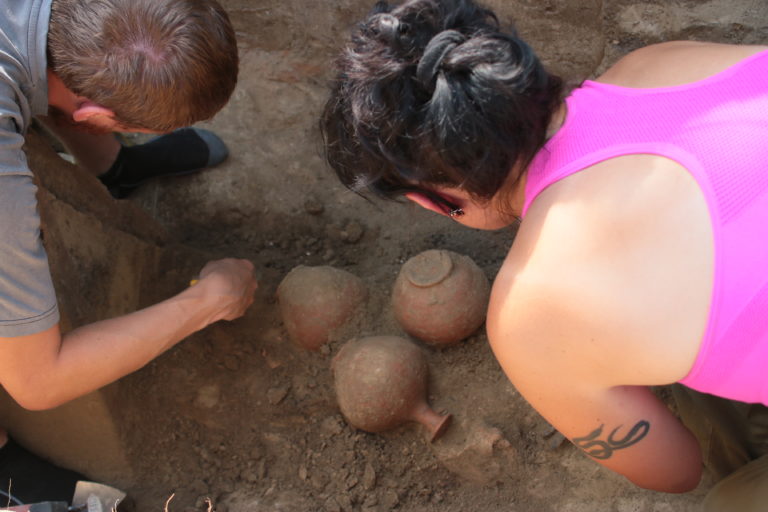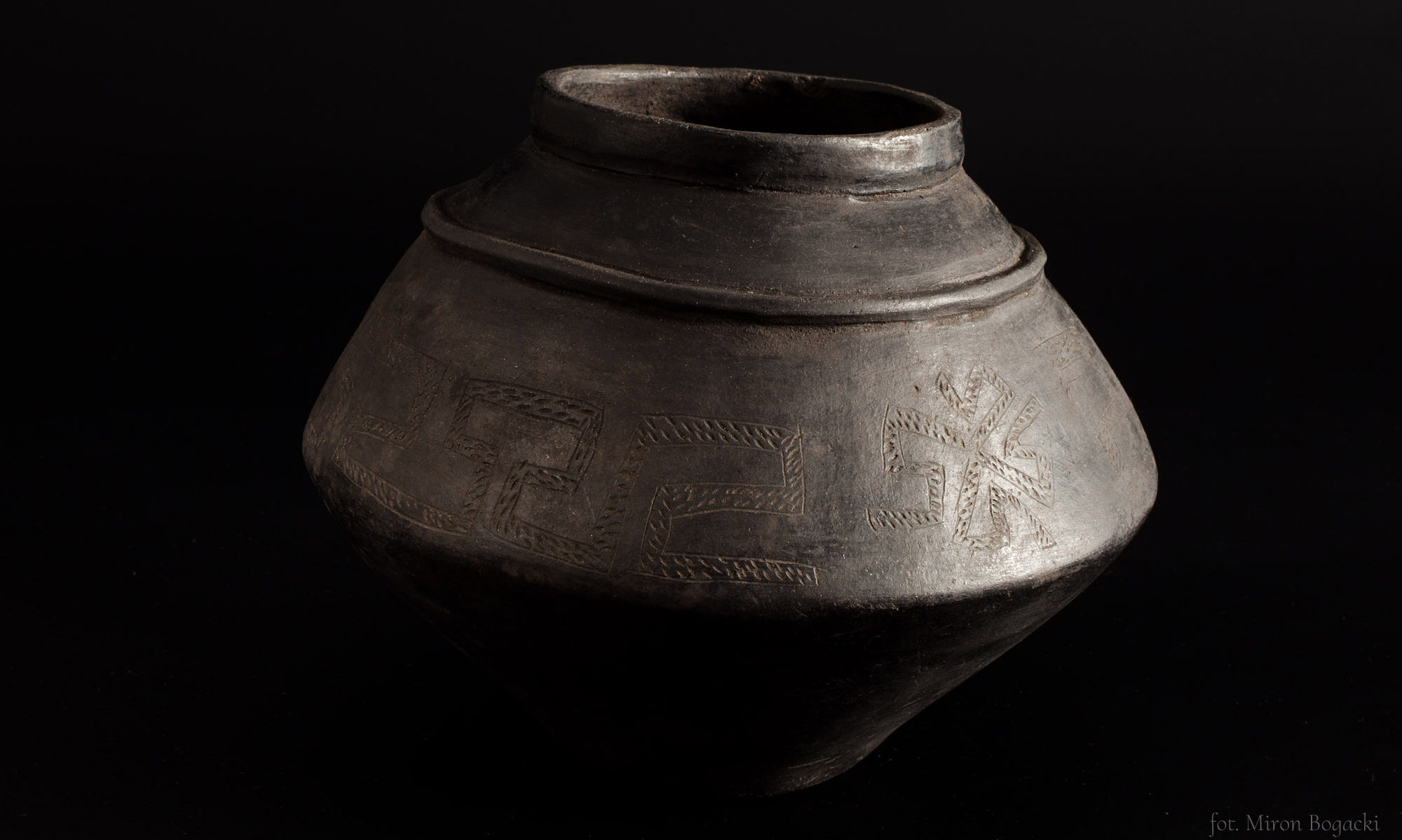Principal investigator: Prof. UW Agnieszka Tomas
Name of the site: Novae
Country: Bulgaria
Partner institutions: Faculty of Archaeology University of Warsaw and the National Institute of Archaeology Bulgarian Academy of Sciences with the Museum
Type of the site: Roman legionary camp (castra legionis), civil settlement (canabae legionis) and late Roman town.
Chronology: 1st-6th century AD
The legionary fortress in Novae today is an archaeological site in northern Bulgaria, on the Danube, near the town of Svishtov. It was probably founded around the middle of the 1st century AD. The 1st Italian legion was based here for most of its existence and its presence is confirmed until the 30s of the 5th century AD. In the area of the camp, which covers 17.99 ha, monumental buildings have been discovered, the most important of which is the headquarters building (principia), although the military hospital (valetudinarium) and baths (thermae legionis) are equally impressive. There was a civil settlement (canabae) on the west side of the camp, and a necropolis on the south and east side. In late antiquity, the fortifications of Novae were reinforced, and an additional area (the so-called annexe) was added to the fortress on its east side, covering an area of almost 9 ha. At that time, both soldiers and civilians lived within the walls. Traces of the latest Roman activity date back to the end of the 6th century.

Description of the present research:
Current archaeological research is being conducted in the central part of the fortress, behind the legion commandant’s office (retentura). In this place, in 2005, the remains of a massive building with a regular layout were documented, as well as the reused base of the statue of the commander of the I Italic Legion during the reign of Gordian III. Since 2025, we have been carrying out a research project financed by the Polish National Science Centre (see below). The aim of the research is to determine the nature of the development of this part of the camp and to determine the location of the residence of the legionary commander (praetorium).
More about the project: Praetorium in Novae
Discovering the praetorium. Layout, chronology and function of the commander’s residence in the Roman legionary fortress Novae (today Bulgaria)
![]()
See the documentary about our field works: FILM
The previous project, including research in the late antique Novae district (the so-called annex) and the necropolis, was completed in 2021.

Project completed/financial support:
Extramural settlement near the Roman legionary fortress at Novae (Lower Moesia) and its fate in Late Antiquity, National Science Centre, OPUS 10, NCN, OPUS 10, no. 2015/19B/HS3/017/90
![]()
Publications:
- A. Tomas, E. Jaskulska, J. Dworniak-Jarych, E Jęczmienowski, T. Dziurdzik, A. Mech, The eastern necropolis at Novae, Archaeologia Bulgarica 24/3, 2020, 37–63
- The transformation of Novae. Eastern necropolis and the late Roman extension [in:] Transformations in Antiquity, A. Tomas (ed.), BREPOLS, RomA Series (in preparation)
Other projects realized in Novae by the Expedition of the Faculty of Archaeology UW:
Novae 2012-2015. Research on settlement structures near the Roman legionary camp at Novae (Lower Moesia) using non-destructive prospection methods (A. Tomas, completed)
Novae 2009-2011. The headquarters building and the fortifications (T. Sarnowski, completed)

